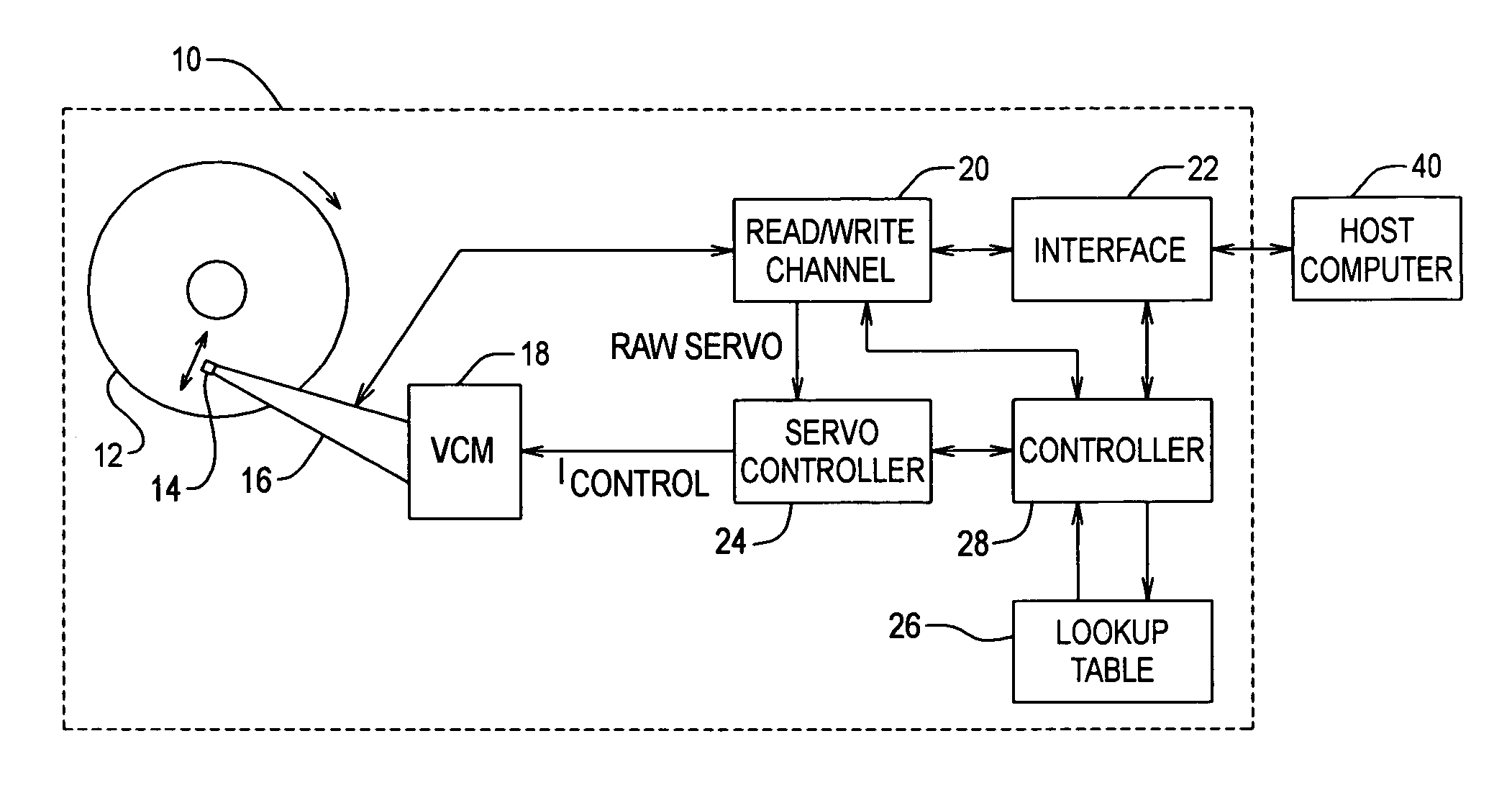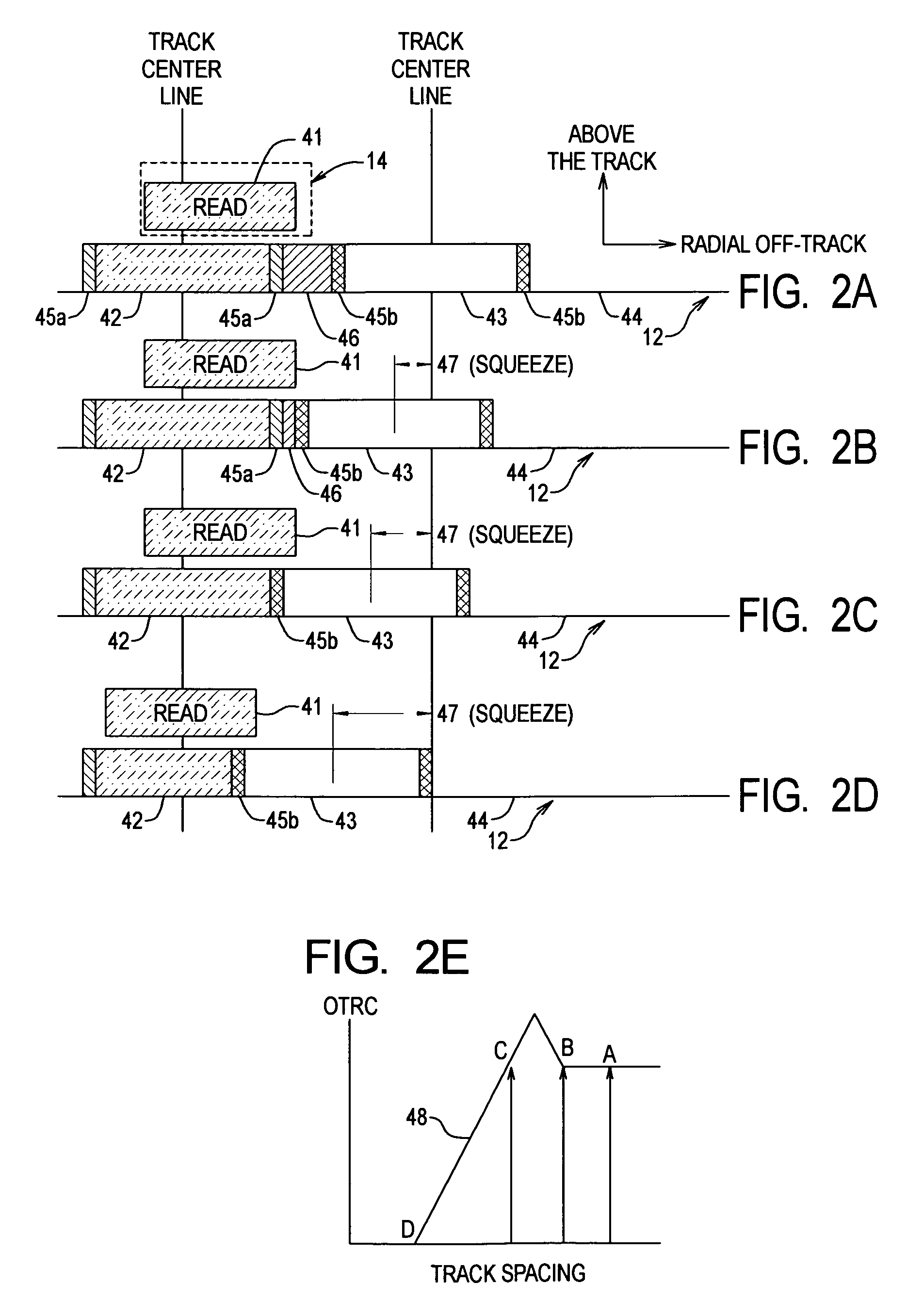Method to accurately predict hard error rates resulting from encroachment
a technology of hard error and accurate prediction, applied in the direction of maintaining head carrier alignment, record information storage, instruments, etc., can solve the problems of increasing the overall manufacturing cost, and affecting the accuracy of hard error prediction. , to achieve the effect of balancing performance and accurate prediction of the risk of hard errors
- Summary
- Abstract
- Description
- Claims
- Application Information
AI Technical Summary
Benefits of technology
Problems solved by technology
Method used
Image
Examples
example implementation
[0062]Referring to FIG. 4A, a flow diagram of steps of an embodiment of the method of determining a WFL for each had 14, according to the present invention, in shown. Three adjacent tracks on a disk surface are selected, and the RRO in those tracks is eliminated using track straightening techniques (step 100). With the RRO eliminated, the head PES is essentially an indication of the NRRO of the tracks relative to the head 14, whereby the PES is used to measure the NRRO distribution for the head 14 before introduction of squeeze (step 102). A nominal WFL and Expected Overshoot value are selected (step 104). The Expected NRRO for the head is determined using the NRRO distribution (step 106). The three tracks are then written n times (e.g., 50 times), such that the outer tracks squeeze the center track by a Squeeze Offset, wherein:
Squeeze Offset=WFL+Expected Overshoot−Expected NRRO;[0063]the center track is read after each write, and any read errors from the center track are counted an...
PUM
 Login to View More
Login to View More Abstract
Description
Claims
Application Information
 Login to View More
Login to View More - R&D
- Intellectual Property
- Life Sciences
- Materials
- Tech Scout
- Unparalleled Data Quality
- Higher Quality Content
- 60% Fewer Hallucinations
Browse by: Latest US Patents, China's latest patents, Technical Efficacy Thesaurus, Application Domain, Technology Topic, Popular Technical Reports.
© 2025 PatSnap. All rights reserved.Legal|Privacy policy|Modern Slavery Act Transparency Statement|Sitemap|About US| Contact US: help@patsnap.com



